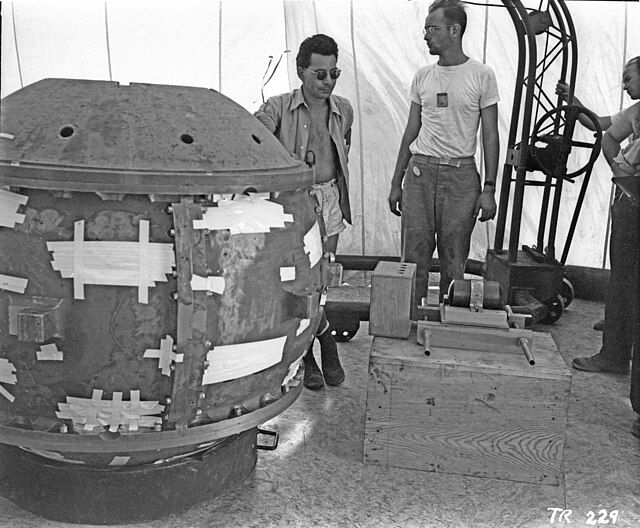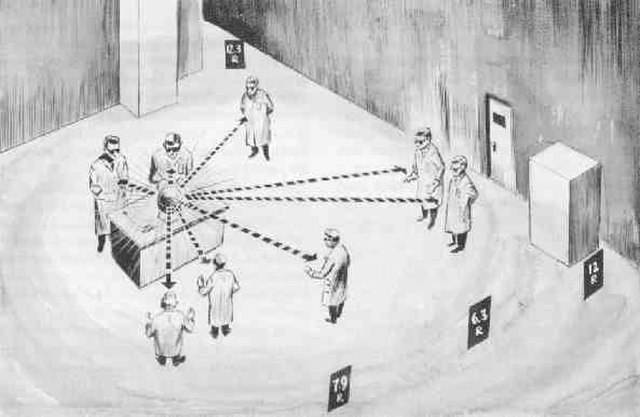Winnipeg's North End is a large urban area located to the north and northwest of Downtown Winnipeg. It is bordered by the Red River on the east, the Canadian Pacific Railway (CPR) mainline on the south, the City of Winnipeg boundary on the west and Jefferson Avenue, Keewatin Street, Carruthers Avenue, McGregor Street and the lane between McAdam and Smithfield Avenues on the north. It is the northern section of the City of Winnipeg as it existed prior to the 1972 municipal amalgamation. Winnipeg's northern suburbs such as West Kildonan and Old Kildonan are not considered part of the North End. The CPR mainline and its Winnipeg yards, which are one of the largest railway yards in the world, act as a physical barrier between the North End and the rest of Winnipeg to the south. This has resulted in the North End remaining a very distinct and unique part of Winnipeg.
North End, Winnipeg
Main Street underpass, looking south, circa 1910
Louis Alexander Slotin was a Canadian physicist and chemist who took part in the Manhattan Project. Born and raised in the North End of Winnipeg, Manitoba, Slotin earned both his Bachelor of Science and Master of Science degrees from the University of Manitoba, before obtaining his doctorate in physical chemistry at King's College London in 1936. Afterwards, he joined the University of Chicago as a research associate to help design a cyclotron.
Slotin's Los Alamos badge photo
Louis Slotin with the Gadget bomb during the Trinity test
A re-creation of the Slotin incident. The inside hemisphere with the thumb-hole next to the demonstrator's hand is beryllium (replacing the uranium tamper of the same size in a Fat Man bomb). There is an external larger metal sphere of aluminium under it (replacing the pusher sphere in this bomb's design). The plutonium "demon core" was inside the spheres at the time of the accident and is not visible, but its dimensions are comparable with the two small half-spheres shown resting nearby.
A drawing based on the above sketch.






